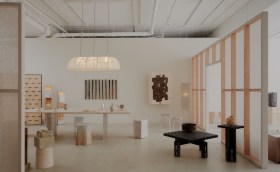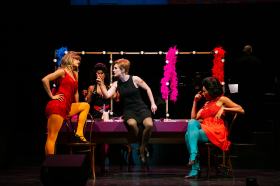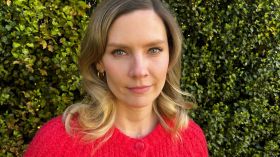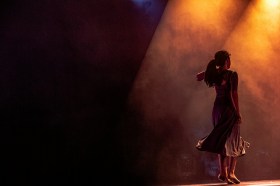For the arts and culture sector in particular, 2020 has been a difficult year, to say the least. So the news that the House of Representatives is holding an enquiry into “Australia’s creative and cultural industries and institutions” provides an interesting opportunity for the sector to explain its plight.
On the one hand, a beleaguered sector is keen to spruik its value to politicians. On the other hand, there is considerable cynicism that evidence to a Parliamentary Inquiry will achieve any policy outcome. This has made for a patchy and inconsistent body of evidence across the two days of public hearings so far.
Day one of the public hearings began with testimony from academics and lobbyists. Academics Julian Meyrick and David Throsby gave evidence about the value of culture and the need for a joined-up national cultural policy framework.
‘One of the most fundamental issues is the question of value,’ Throsby argued. ‘I would make a very clear distinction, as would economists who work in this field, between what we see as the economic value of the cultural industries and the cultural value.
‘All of this coalesces in the area of cultural policy – which has to be seen as a wide-ranging area of government administration,’ he expanded. ‘It embraces such a wide field, not just the arts sector itself or the creative sector, but also education, health, regional development, Indigenous affairs, foreign affairs and trade.’
Throsby went on to argue for a proper cultural policy at national level. ‘We need a new, updated and coordinated cultural policy statement,’ he concluded. ‘It’s some time now since we had a cultural policy statement for Australia, and we’re overdue for a new one.’
Griffith University’s Julian Meyrick concurred, pointing out the need for better coordination between federal, state and local levels of government. ‘What I’m referring to is better coordination across those jurisdictions in order to deliver what Professor Throsby has rightly called for, which is some kind of coordinated cultural plan.’
THE VOICE OF MIDDLE AUSTRALIA
Arts lobby group A New Approach piqued the interest of the politicians with their research on what they called ‘middle Australia’. This was a series of qualitative focus groups undertaken for the think tank by a corporate research firm.
‘Those middle Australians are defined as middle-aged, middle income swing voters in predominantly marginal Federal electorates in predominantly regional and suburban communities,’ A New Approach’s Kate Fielding told the Inquiry.
‘This cohort, the middle Australia cohort, absolutely think that arts, culture and creativity is an essential part of being Australian; in fact, an essential part of being human,’ she explained, adding that ‘there were two very clear themes in the way that they spoke about that.’
‘This cohort, the middle Australia cohort, absolutely think that arts, culture and creativity is an essential part of being Australian.’
– A New Approach’s Kate Fielding
‘One was around belonging, community, being part of something, being connected to their community; and the second was in terms of inspiration, creativity and ideas … There was also a really strong theme in terms of, I guess I’d say, national identity and national pride and how we represent Australia to the world. People were really clear and proud about the cultural and creative expression in Australia.’
In response, Fielding won glowing praise from Liberal MP Katie Allen, who decided to put on the record her ‘gratefulness for the excellent work A New Approach has been doing’.
WRITERS DOING IT TOUGH
But while the academics and think-tankers pushed the big picture, the evidence given by artists themselves was rather more succinct. Perhaps the hardest-hitting moment came later on the first day of hearings, when a group of writers and editors returned the discussion back to the grass roots.
Author Christos Tsiolkas told the committee that ‘the last fortnight I have spent time with three friends who are young writers’. He pointed out that these writers faced ‘real life desperate situations – how they’ll pay their rent and how they’re going to look after their young children.’
Read: National calls for a national plan
With typical concision, novelist Charlotte Wood told the inquiry that ‘writers themselves are in absolutely dire economic difficulty’. Wood cited figures that literary writers’ annual income from their books was just $4,000 a year. ‘That work is piecemeal, freelance, poorly paid and very unstable,’ she said.
‘COVID is destroying the livelihoods of writers in many ways,’ Wood continued, observing that the pandemic was ‘eviscerating three major income streams for writers outside their books, which are public speaking, university teaching and freelance writing.
‘There was nothing in the government’s COVID arts rescue package for writers who are not attached to organisations but who work alone,’ Wood added. ‘Public funding for writers is at rock bottom.’
FUNDING FRUSTRATIONS
Later on day one, Gadigal artist Kate Constantine gave stark testimony of the impact of COVID on her livelihood. She had two major exhibitions cancelled, leaving with her no income to support her young family. Despite this, she didn’t get any of the emergency cultural funding handed out by any level of government.
‘I wasn’t successful on any of my rounds of funding,’ she told the Inquiry. ‘ I also have two small children that aren’t school aged yet – one is one-and-a-half and one is five –I’m pregnant with my third and I’m the sole income earner in my household.’
To add insult to injury, the Australia Council told her the reason she didn’t get funding was that she was deemed too ‘successful as an artist’ in terms of her exhibition record. ‘That was the feedback I got from the Australia Council.’
A common theme of much of the evidence of day one was the difficulties faced by organisations and artists navigating the funding maze.
The Sydney Review of Books’ Catri Menzies-Pike explained how the publication had been unable to access any COVID-related arts funding this year, because it was not a performing arts organisation. ‘I think that there’s a tendency across the board to view arts audiences in terms of bums on seats and people in a room, rather than thinking about the very complex ways in which people encounter literature, whether it’s in a library, on a screen or in book bought from a bookshop,’ she told the Inquiry.
The National Association for the Visual Arts’ Penelope Benton raised the difficulties artists face dealing with Centrelink, which notoriously does not recognise art as a genuine career for recipients applying for JobSeeker. ‘Art is a job,’ Benton said. ‘It’s a real job. But it’s not recognised by Centrelink.’
THE SECOND HEARING
In contrast to the gritty reality of day one, evidence on the morning of the second day of hearings was more sedate. The Australia Council’s Wendy Were and Adrian Collette played a straight bat to the committee’s questions, while gently making a case for increased public funding.
The Coalition’s Gold Coast MP Angie Bell asked about a national framework for measuring the social impact of the creative industries. The Australia Council’s Wendy Were answered that ‘the short answer is there isn’t one – but it could be very powerful.’
The First Assistant Secretary for the Arts, Stephen Arnott, was asked about the RISE grants. The RISE program, announced with fanfare by the Prime Minister in the depths of lockdown restrictions in June, has yet to pay out any funding. At least the recipients have finally been decided. ‘We expect that the full list of recipients will certainly be released by Christmas,’ Arnott told Friday’s hearing.
There was at least some minor excitement on day two, however: Liberal MP Trent Zimmerman spilled his cappuccino down his shirtfront.






